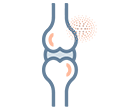Nikkel, S. (2017). Skeletal Dysplasias: What Every Bone Health Clinician Needs to Know. Current Osteoporosis Reports, 15(5), 419-424. doi: 10.1007/s11914-017-0392-x
Calder, A. (2020). The changing world of skeletal dysplasia. The Lancet Child & Adolescent Health, 4(4), 253-254. doi: 10.1016/s2352-4642(20)30056-0
Mortier, G., Cohn, D., Cormier‐Daire, V., Hall, C., Krakow, D., & Mundlos, S. et al. (2019). Nosology and classification of genetic skeletal disorders: 2019 revision. American Journal Of Medical Genetics Part A, 179(12), 2393-2419. doi: 10.1002/ajmg.a.61366
Krakow D. (2015). Skeletal dysplasias. Clinics in perinatology, 42(2), 301–viii. https://doi.org/10.1016/j.clp.2015.03.003
Maddirevula, S., Alsahli, S., Alhabeeb, L., Patel, N., Alzahrani, F., & Shamseldin, H. et al. (2018). Expanding the phenome and variome of skeletal dysplasia. Genetics In Medicine, 20(12), 1609-1616. doi: 10.1038/gim.2018.50
Huybrechts, Y., Mortier, G., Boudin, E., & Van Hul, W. (2020). WNT Signaling and Bone: Lessons From Skeletal Dysplasias and Disorders. Frontiers in endocrinology, 11, 165. https://doi.org/10.3389/fendo.2020.00165
Lachman, R. S., Tiller, G. E., Graham, J. M., Jr, & Rimoin, D. L. (1992). Collagen, genes and the skeletal dysplasias on the edge of a new era: a review and update. European journal of radiology, 14(1), 1–10. https://doi.org/10.1016/0720-048x(92)90052-b
Offiah A. C. (2015). Skeletal Dysplasias: An Overview. Endocrine development, 28, 259–276. https://doi.org/10.1159/000381051
Rimoin, D. L., Cohn, D., Krakow, D., Wilcox, W., Lachman, R. S., & Alanay, Y. (2007). The skeletal dysplasias: clinical-molecular correlations. Annals of the New York Academy of Sciences, 1117, 302–309. https://doi.org/10.1196/annals.1402.072
Frias J. L. (1975). Genetic heterogeneity in skeletal dysplasias. Annals of clinical and laboratory science, 5(6), 435–439.






